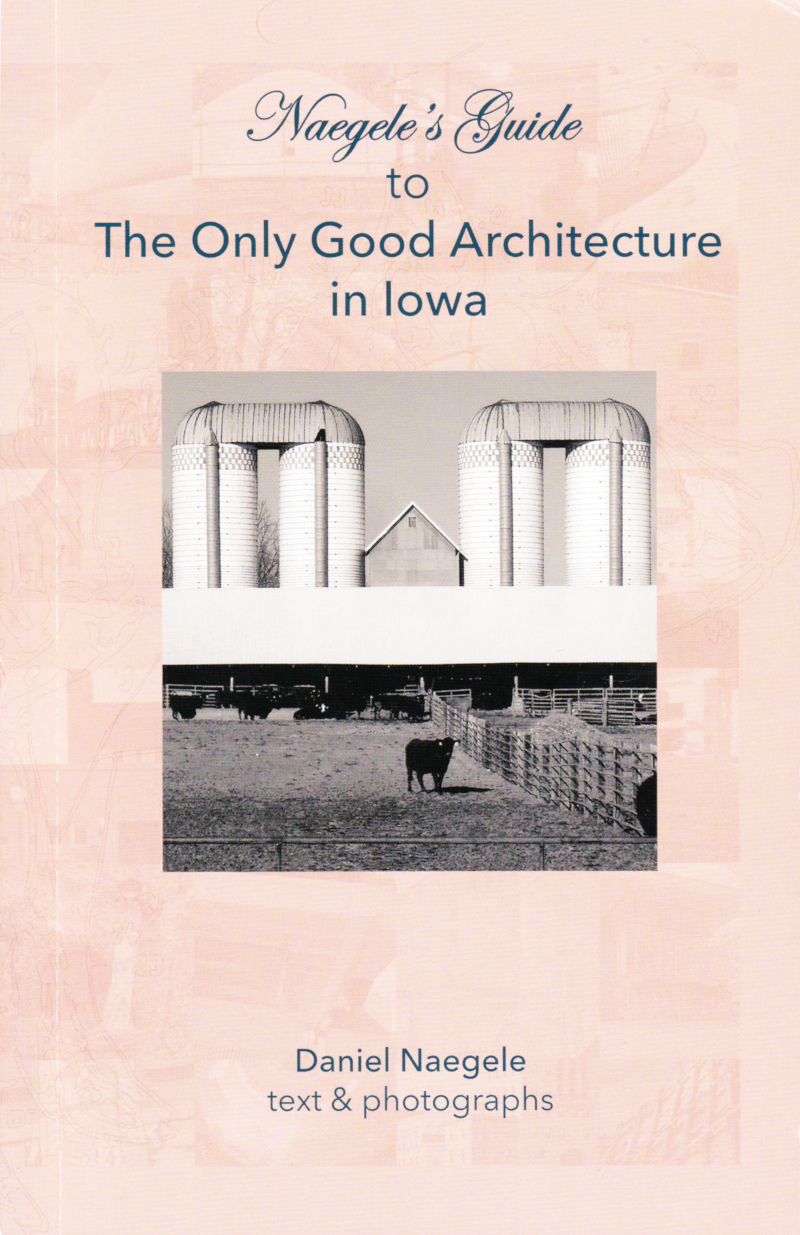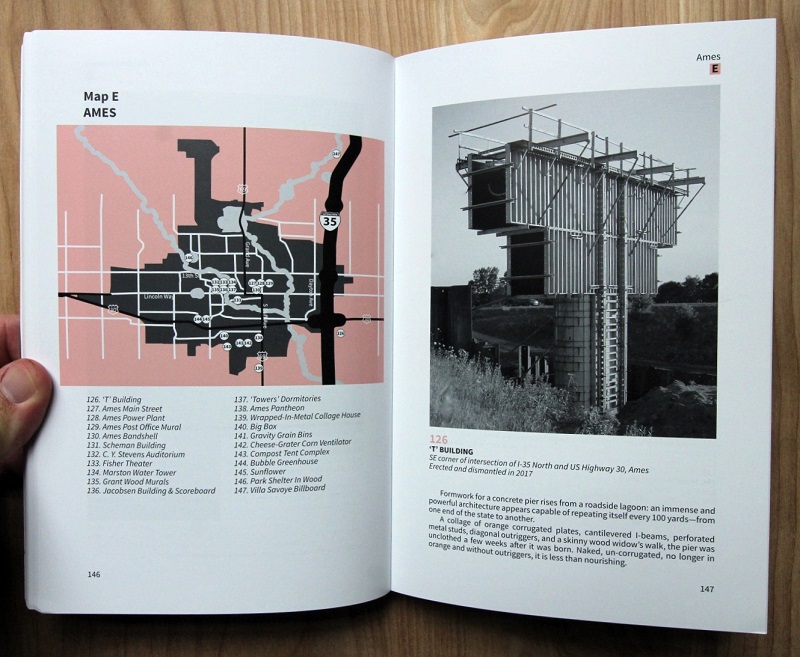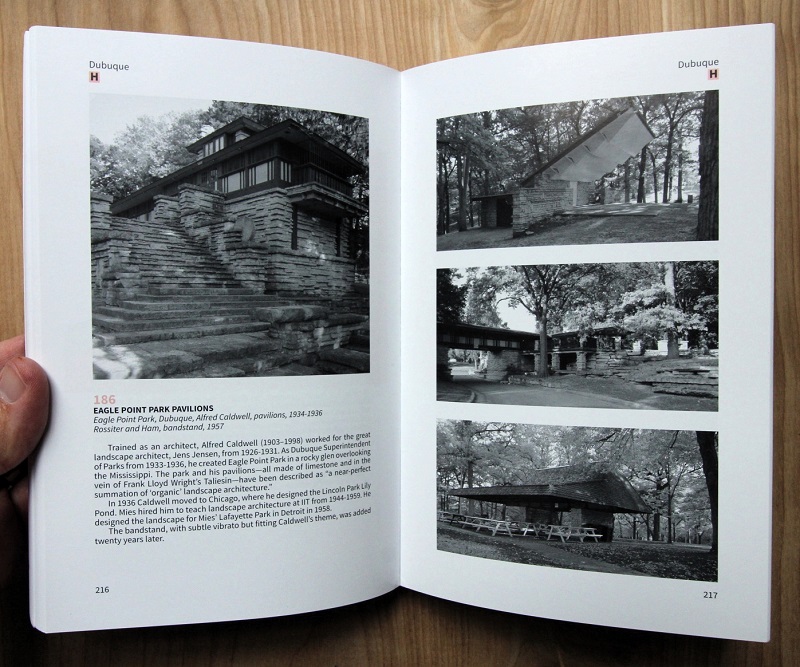Naegele's Guide to the Only Good Architecture in Iowa
Naegele's Guide to the Only Good Architecture in Iowa
Daniel Naegele
Culicidae Architectural Press, 2019

Paperback | 5-1/2 x 8-1/2 inches | 274 pages | English | ISBN: 978-1683150152 | $24.95
Publisher Description:





Author Bio:

Daniel Naegele
Culicidae Architectural Press, 2019

Paperback | 5-1/2 x 8-1/2 inches | 274 pages | English | ISBN: 978-1683150152 | $24.95
Publisher Description:
Naegele’s Guide to the Only Good Architecture in Iowa is a deceptive title but it is not a misnomer. Guide is accurate. Iowa is fairly accurate. Naegele’s is there because this is a personal account, one that makes no attempt to be unbiased. Naegele’s qualifies Good, “good” being not absolute but contingent and personal and therefore a very questionable qualifier. Only is the title’s difficult word. “Only Good Architecture in Iowa” suggests that architecture is a scarce commodity in Iowa, a suggestion with which Naegele would agree if by “architecture” one means high architecture.dDAB Commentary:
By Architecture, however, Naegele means “good building,” regardless of whether or not that which is built was designed by an architect or whether, in fact, it is a habitable structure or even a building at all. Most entries in this guide are concerned either with vernacular works that are habitable tools—barns, corncribs, ventilator machines, silos—or with built works that are not really buildings at all: billboards, bridges, murals, graveyards, landscapes, wind turbines and water towers. Only brings irony to the title, rendering questionable the assumption it asserts and initiating debate within an otherwise matter-of-fact description. Its inclusion in the title predicts the book’s mildly contentious, but always utterly practical, nature.
Iowa and the six states that it borders (yes, it borders that many states), including Nebraska, South Dakota, and Missouri, are often lumped into the dismissive phrase "flyover country," of course referring to people zipping back and forth between the East and West Coasts and rarely, if ever, hopping off in between. As a born, bred, and educated Midwesterner, for me Iowa was, though not much better, "drive-through country." By this I don't mean it was the land of drive-thru banks, food, and the like (what US place isn't?), but that it was a state that was often between my starting point and destination. When I upped and left suburban Chicago for college many years ago, I spent one night in Des Moines with my family before heading south to Kansas, having taken I-80 to I-35, the two main routes through Iowa. Most recently, when taking a week-long looping family road trip that went from Missouri to Wyoming and back again, it was one night in Sioux City before skirting down along the Missouri River on I-29. In both cases Iowa wasn't a destination; the state was a layover on the way to somewhere else in some other state. But what if Iowa was seen as a destination in its own right? And what if Naegele's Guide was available back then and served as my guide to the state's wide-ranging architecture?Spreads:
For starters, I would have made sure to see the Woodbury County Courthouse in Sioux City, what Naegele calls, "hands down," Iowa's "Building of the Century." I also would have seen plenty of capital-A architecture in Des Moines: buildings by Eliel and Eero Saarinen, Mies van der Rohe, and Harry Weese on the Drake University Campus, which was masterplanned by the Saarinens; the Des Moines Art Center, first designed by Eliel Saarinen (1948) then added on to by I.M. Pei (1968) and Richard Meier (1984); and a couple bravado concrete buildings by lesser known architect James Brewer: the Big Beam Building he designed for a church on University Avenue and a Drive-Under Bridge Bank on East Euclid. These last two appear to be buildings that wouldn't find their way into a typical guidebook (I haven't seen David Gebhard and Gerald Mansheim's earlier Buildings of Iowa to know for sure), which would ordinarily make them difficult to come across. Here, the precise address for the bank is helpful, but the general address for Big Beam (just "University Avenue"?) is just the opposite. But with Naegele's Guide embracing Architecture as well as farm buildings, billboards, wind turbines, and even ephemera (the "'T' Building" in the fourth spread, demolished in 2017, is just one example), much of it well outside of Des Moines, Sioux City, and other cities, the directions provided aren't always clear. But what is problematic for me, when trying to provide a link here to buildings on Google Maps, is hopefully refreshing for people driving around the state exploring Iowa's hidden treasures — who knows what else they'll come across along the way? For those not heading to Iowa anytime soon, though, Naegele's Guide is full of witty, critical takes on architecture in a state not known for it, making it a joy to read from a distance.





Author Bio:
Daniel Naegele is an architect and associate professor of architecture at Iowa State University. A graduate of Yale University and of the Architectural Association in London, he completed his dissertation, Le Corbusier's Seeing Things: Ambiguity and Illusion in the Representation of Modern Architecture, under the supervision of Joseph Rykwert at the University of Pennsylvania in 1996.Purchase Link:
